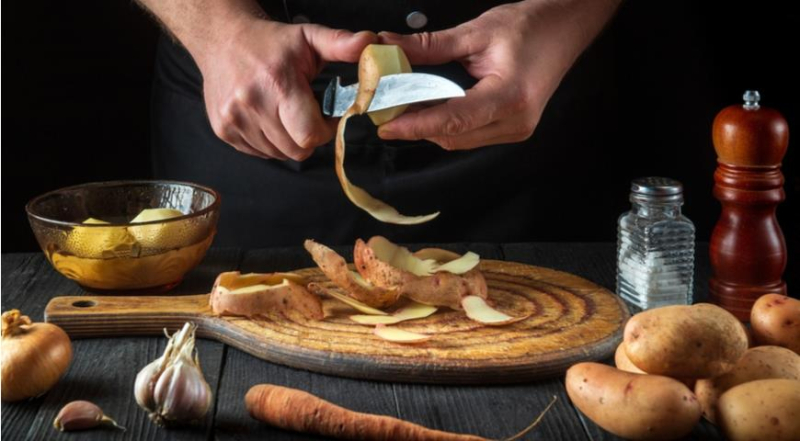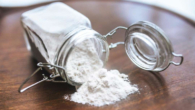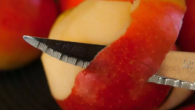
5 affordable green habits that are easy to follow in the kitchen right now
0
If in 2022 you decide to become more attentive to the planet, the time to start is today. Our tips are easy to follow, but they will help you reduce food waste, be more frugal with food, and cook more consciously. For the environment, our habits have great power!
Tip #1. Have a special container for food scraps in the kitchen
In the kitchens of some restaurants, where caring and attentive employees work, there is a special bucket, where they put everything for the broth. Cuttings of onions, celery, carrots, zucchini, tomatoes, potatoes are not thrown away after processing vegetables, but are kept in the same container together with pieces of roots and stems of spicy greens. It helps to make vegetable broth from what would otherwise go to the garbage.
This practice is easy to transfer to the home kitchen. Put clean vegetable scraps in a large food container (preferably dried as much as possible) and put them in vegetable broth for soups, sauces or risotto. If there is no time for this, send the container to the freezer. It is optimal to divide food waste into portions sufficient for cooking 1-2-3 liters of broth or whatever is more convenient for you. This can be done by lining portions of vegetable scraps and pieces with parchment paper.
Tip #2. Use products 100%
We know that many people will laugh at the fact that potato chips are made from potato peels, turkey marinade is made from olive oil, remember peasants, hunger, the USSR, but the use of pumpkin peels, onions, potato broth, water left after cooking rice or Italian pastes, liquids from cans of canned tuna – not bliss, but a healthy solution! All this is edible, you just need to know how to use these leftovers. Sometimes the new life of such “secondary” products is the result of long experience of different peoples or experiments of modern chefs. Using edible leftovers is a good money saver when chips are made from potato peelings, turkey marinade is made from olive brine, and in mayonnaise eggs are replaced with liquid from a can of canned beans or chickpea stock.
Tip #3: Don't throw away products with an expiration date
In order not to throw away products whose expiration date is coming to an end, choose recipes for quick and nutritious dishes. Why fast? It is unlikely that you will want to cook something complicated and long from something that you can simply throw away out of habit. Pay attention to recipes for sauces for Italian pasta/meat/poultry/vegetables, toppings for stuffed vegetables or pizza, omelets/eggs/frittata, broth/soup.
IMPORTANTLY! The expiration date is the time interval when the product can be eaten or used for cooking. The shelf life determines the time when the product retains its original qualities (fresh taste, smell, consistency and useful substances). During the storage period, products do not lose their consumer qualities. Expiry dates are always greater than or equal to the shelf life. Example: the shelf life of honey and olive oil can be calculated in months, and the shelf life – in years.
Tip #4. Keep food leftovers in the fridge in sight
Those who have practiced “green” habits for a long time know that in order to eat food on time without throwing anything away, it is better to store leftovers in glass jars. Opaque containers, foil, food film – all this hides products from us, so we can simply forget about them.
In a well-organized restaurant kitchen, containers with products, preparations and edible food waste are clearly visible, because they are all marked and dated. This is a very useful habit!
Tip #5. Plan more, buy less
Again, let's take the example of catering establishments, where “green” habits are implemented much more actively than in a home kitchen. It is believed that if the employees of a restaurant/café buy products 2% more than necessary, this can potentially cut the profit of the establishment in half.
We think that this math is also relevant for the home, so make a weekly menu for your family and check food stocks before going to the store or market. Divide the purchase list into two parts: mandatory and additional. If it is necessary to go to several stores for the sake of a must, then the products from the additional part that you did not find immediately can be bought later.
Often we succumb to impulsive impulses and tend to buy more than we need. So limit yourself either by the amount you plan to spend or the weight you carry in your hands/load into the trunk of your car on the way back from the store.
Start the changes in small steps. We can't save the world alone, we won't change our lives in one day, so we have to be kind to ourselves. Just pick a few available “green” skills, such as these 5, and implement them into your life.









Leave a Reply